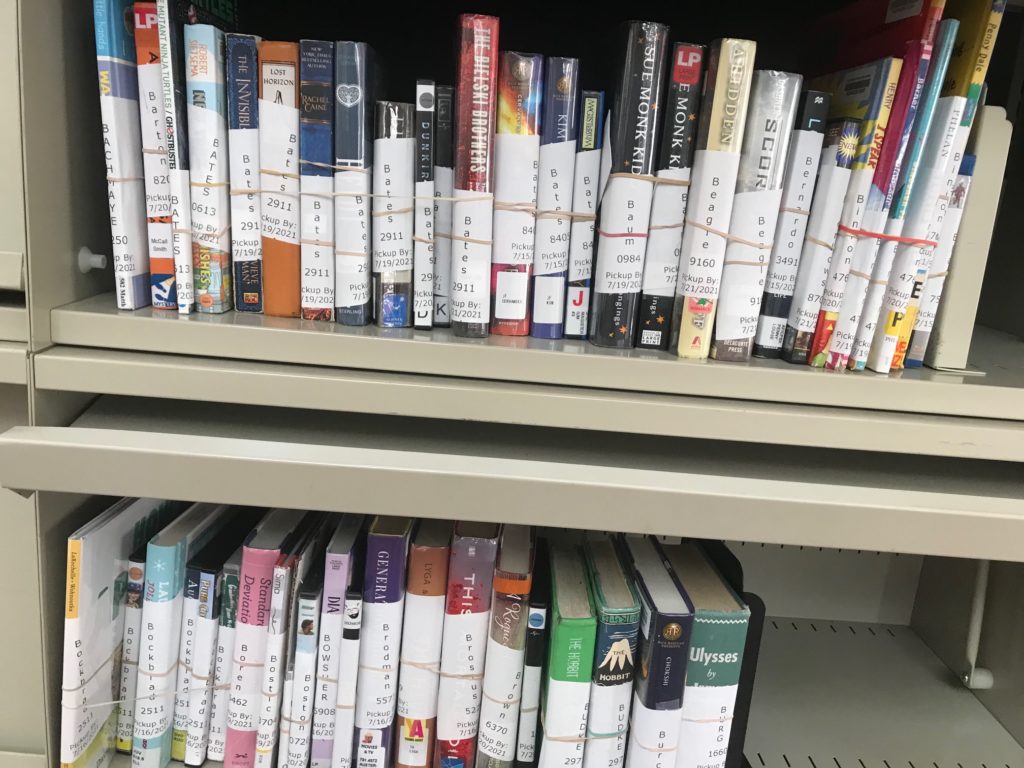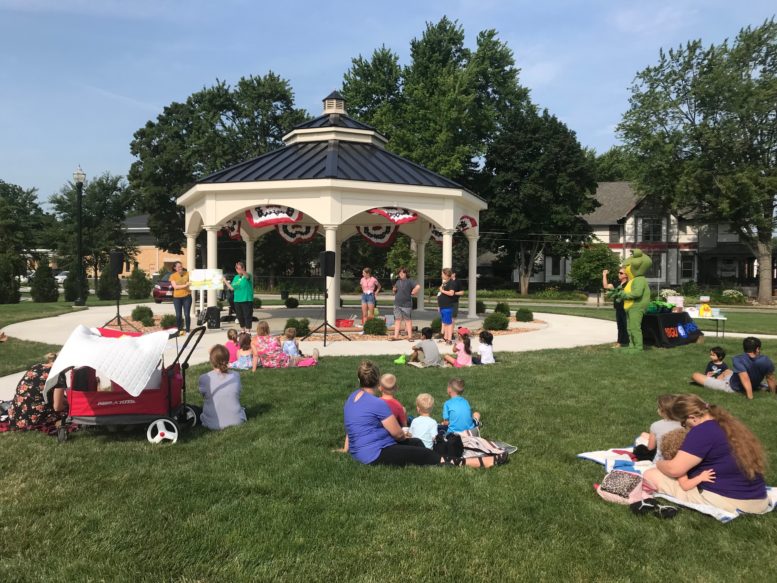By DAVID DUPONT
BG Independent News
In past years, various spaces in the Wood County District Public Library would start filling up with all manner of goods – grills, bicycles, toys for all ages, paintings, glass and more – as anticipation would build for the Foundation’s annual benefit. The social event, complete with live and silent auctions, wine, and a buffet of hors d’oeuvres, raised money for books and other materials.
The pandemic temporarily closed the book on the live Novel Night. It couldn’t tamp down on the generosity of donors.
Last summer, No Show Novel Night brought in just over $100,000, compared to $150,000 in 2019.
Since the fundraiser was established in 2009, it has raised $1.1 million.
All of that money, Library Director Michael Penrod said, goes to “predominately books in every format.” That includes licenses for ebooks, large print books, copies of the latest best seller, children’s books, popular history and more.
“My staff is eager to spend the money and get those books,” Penrod said. “We buy them and they float them out of the building. … This appeal gives us the ability to make certain we are meeting local demand.”

The library budgets 14 percent of its revenue to spend on materials, higher than the national recommendation. The Novel Night money is added to that; it does not replace it.
“The party is awesome,” Penrod said. And seeing the generosity is “humbling.”
But back in February when the foundation had to start making arrangements there was still a lot of uncertainty over the pandemic.
“February was definitely a different climate than June or July,” Penrod said.
So they opted, for a second year, to go with a No-Show Novel Night.
Penrod said they are seeing donations not just from regular supporters but also large and small gifts from new donors including some people he doesn’t know. “The level of support is amazing.” Click here to donate.
While some libraries across the state reported 70 percent drops in circulation, WCDPL’s was down a more modest 30 percent.
Curbside pickup helped maintain circulation, but the library still couldn’t host the story times, when families leave with armloads of books.
“Circulation is a little depressed,” Penrod said. “But this summer is feeling more like normal than I feared to hope. It feels good.”
The children’s reading program has moved outdoors and “the attendance is phenomenal,” he said with 60 to 70 people gathered on Wooster Green.
Children’s services and the bookmobile “are delivering a lot of magic.”
The decline in circulation bucks a strong upward trend in circulation.
From 2010 to 2019, overall circulation was up 52 percent, driven by an over 9000-percent increase in the circulation of ebooks and digital content.
That comes with a price. Unlike traditional formats, the library does not buy ebooks, they license them, and those licenses expire within a couple months and have to be purchased again.
So an audio book of Robert Jordan fantasy novel with 30 cassettes may have cost $185, but the library owns it, and can replace the case and cassettes, for a minimal cost. That volume can continue to circulate for 30 years.
The licensed ebook costs as much and disappears. ‘It’s a much higher unit cost,” Penrod said.
So the library continues focus its ebook purchases on popular fiction.
Libraries around the state did get a boost from the governor and state legislature in the recently adopted biennial budget.
The fund, which brought in $1.6 million for the WCDPL last year, represents more than 50 percent of the library’s budget with the local levy, first approved by voters in 2010, consistently generating $1 million.
The Public Library Fund will continue to get 1.7 percent of general state revenues. That has been the rate since the last budget, but would have dropped to 1.66 percent without language added into this year’s budget.
At its high point in 2001, the Public Library Fund provided $497.6 million to the state’s libraries. That dropped to $340.6 million in 2010 after the Great Recession and has inched up since then.
Only now, said Penrod, who testified at the State House in favor of maintaining the 1.7 percent rate, is the fund approaching those numbers in terms of current dollars.
The fund generated $452.1 million in 2021. “If the economy grows, the way they hope and I hope and pray it does, we should be OK. … I’m not asking to win the lottery. I just want stability.”





